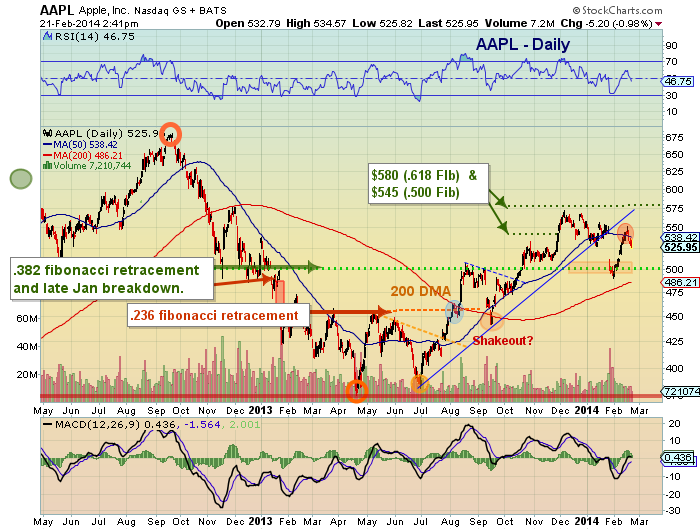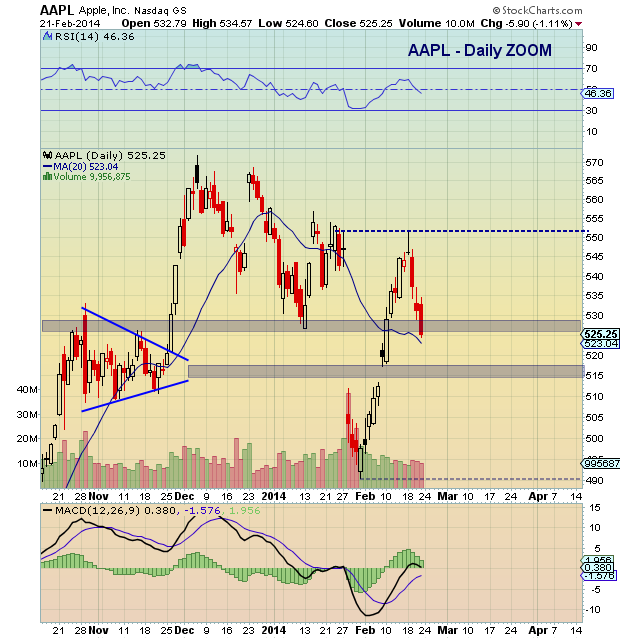After two failed attempts to breakout above the 61.8 Fibonacci retracement level in late 2013, Apple (AAPL) began to lose momentum. AAPL stock pulled back to its uptrend line and technical tension escalated as relative strength faded into an all important earnings report. Needless to say, Apple’s earnings didn’t go over well and the stock plummeted.
In my previous AAPL update, I noted the importance of the uptrend line:
“…although losing an uptrend line doesn’t necessarily mean that the macro “move” is over, it does mean that near-term risk is elevated.”
Risk heightens because the “trade” setup becomes trickier. Will the flush see follow through to the downside? Or will it create a vacuum with which to rally (i.e. the 3 day rule)? If wading into a flush, stops become an important tool to employ to mitigate risk. In Apple’s case, the stock dipped down to important support near the October breakout and 38.2 Fibonacci level. After holding that level, AAPL rallied hard in a classic “backtest” of its broken uptrend line.
 This sets up for some important support and resistance levels to watch. As I mentioned, the broken trend line doesn’t negate the direction… but it does alert investors to make the stock prove itself. Right now, AAPL is in lala land (let’s call it neutral). Let’s break down the bullish and bearish technical levels to watch:
This sets up for some important support and resistance levels to watch. As I mentioned, the broken trend line doesn’t negate the direction… but it does alert investors to make the stock prove itself. Right now, AAPL is in lala land (let’s call it neutral). Let’s break down the bullish and bearish technical levels to watch:
AAPL Support:
The four day pullback has AAPL sitting on minor lateral support around $525. Below that is a confluence of support including the open gap between $512 and $517, the 61.8 Fibonacci retracement of backtest rally (at $515), and the November breakout. A drop below this support area would elevate risk and quickly bring into focus the recent lows.
AAPL Resistance:
The recent highs mark the most important near-term resistance. And getting past that nasty shooting star candle may be tough. Above that comes the November highs and 61.8 Fibonacci level ($580). Trade safe.
No positions in any mentioned securities at the time of publication. Any opinions expressed herein are solely those of the author, and do not in any way represent the views or opinions of any other person or entity.









